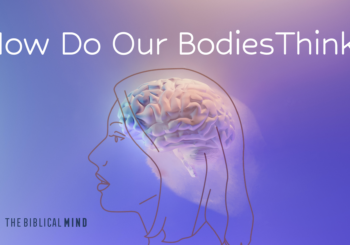How and Why Should We Rejoice in 2021? Understanding Joy in the Bible
“[R]ejoice before the LORD your God.” (Leviticus 23:40)
“Rejoice in the Lord always.” (Philippians 4:4)
Joy is commanded in both the Hebrew and the New Testament Scriptures. However, this command is itself quite astonishing. Even at the best of times, we do not seem to be capable of producing joy on demand. Instead, joy is associated with freedom from commands,1See the emphasis on unscripted action in N.H. Frijda, The Emotions. Cambridge University Press, 1986, p. 89. and is often experienced as arising unexpectedly, as a gift.2See J.E. Crisp, Introduction: A bright sorrow, in M. Volf & J.E. Crisp (Eds.), Joy and human flourishing: Essays on theology, culture, and the good life. Minneapolis: Fortress Press, 2015, pp. vii–xviii.
Difficult circumstances compound this problem. After more than a year of a global pandemic, mass shootings, racial violence, environmental strain, and political tensions, it may feel impossible to conjure up joy. It may even feel irresponsible, delusional, or too much like “toxic positivity” to obey the command to rejoice in the face of so much suffering and injustice. Can joy really be commanded in times such as these? And if so, how might it be pursued?
Enjoying this article? Read more from The Biblical Mind.
To begin answering this question, let’s consider one of the ways in which joy is commanded in the Hebrew Scriptures—through the Festival of Booths. As we’ll see shortly, the observance of the command to celebrate this festival was often embedded in the midst of national mourning and trauma. That the Israelites were able to obey the joy command in such circumstances points to lessons about joy for our own times.
Exploring this ritual will reveal two things about the biblical command to rejoice:
First, obedience to the command is made possible through enacting certain rituals and routines connected to knowledge of God’s faithful relationship with His people.
Second, joy in the Bible has the powerful effect of rejecting indifference and inaction, in favor of compassion and constructive engagement. We can apply these Hebraic insights about the connection between rituals and joy to our rituals and routines that we have today—some perhaps newly formed in the past year of disrupted living, and some ripe for change as we emerge from the pandemic.
The Festival of Booths in Nehemiah: Mourning and Joy in the Bible
Chapters 8–9 of Nehemiah recount a moment in history in which the Israelites are experiencing great sorrow, yet were still commanded to celebrate with joy, making this instance especially illuminating for our question of how to rejoice in 2021.
Joy has the powerful effect of rejecting indifference and inaction.
In this story, the Israelites are assembled in Jerusalem, having returned from captivity in exile but still subject to foreign rule and threats of invasion by enemy nations. The priest Ezra reads the Book of the Law to the people and leads them in renewing their covenant with God. In the midst of this, they obey the command to celebrate the Festival of Booths, or Sukkot, an annual ritual prescribed for the Israelites in Leviticus 23 and Deuteronomy 16.
In the story described in these chapters of Nehemiah, we see an interruption of mourning, a command to rejoice, and then a resumption of mourning. How are these rapid shifts between mourning and joy in the Bible possible, and is that even healthy?
Interrupted Mourning
The initial reaction of the assembly to the reading of the Law is mourning and weeping:
And Nehemiah, who was the governor, and Ezra the priest and scribe, and the Levites who taught the people said to all the people, “This day is holy to the Lord your God; do not mourn or weep.” For all the people wept when they heard the words of the law. (Neh. 8:9)
The reading of the Law gives rise to many reasons to mourn. It elicits reflection on the nation’s covenant unfaithfulness to God, which had resulted in their captivity and the destruction of their city and their Temple. However, the people are instructed to put aside mourning.
The Command to Rejoice
The command to stop mourning is not the end of the instruction—the narrative continues:
Then he said to them, “Go your way, eat the fat and drink sweet wine and send portions of them to those for whom nothing is prepared, for this day is holy to our Lord; and do not be grieved, for the joy of the Lord is your strength.” So the Levites stilled all the people, saying, “Be quiet, for this day is holy; do not be grieved.” And all the people went their way to eat and drink and to send portions and to make great rejoicing, because they had understood the words that were declared to them. (Neh. 8:10–12)
The next day, the people celebrate the Festival of Booths:
And all the assembly of those who had returned from the captivity made booths and lived in them; for from the days of Jeshua son of Nun to that day the people of Israel had not done so. And there was very great rejoicing. And day by day, from the first day to the last day, he read from the book of the law of God. (Neh. 8:17–18)
Through feasting and celebrating the Festival, there is a movement from mourning to joy—even “very great” joy.
A Resumption of Mourning
A few days after the Festival of Booths is celebrated, the Israelites hold a national day of mourning:
Now on the twenty-fourth day of this month the people of Israel were assembled with fasting and in sackcloth, and with earth on their heads. (Neh. 9:1)
Ezra leads the people in confession, sorrowing over their sins and the sins of their ancestors, and the hardships they have endured. He concludes: “we are in great distress” (Neh. 9:37). Following this, the people recommit themselves to the covenant with God (Neh. 9:38).
The Combination of Mourning and Joy
In these chapters, the Israelites move from mourning to joy, and back to mourning. And yet, their circumstances remain constant—they are still in same the process of rebuilding their city, and they hear the same Law. Explaining this combination of mourning and joy requires a closer look at the original prescriptions of the Festival of Booths.
How the Festival of Booths Prepares for Mourning and Joy in the Bible
Four Factors of the Festival of Booths in Leviticus 23 and Deuteronomy 16
Though at first glance it may seem difficult to grasp the relevance of the Festival of Booths for those of us who are not practicing Jews, the ritual actually involves four things that crucial for understanding how joy in the Bible, and how it can be pursued.
First, the Israelites don’t just sit back and wait for joy to strike them, nor do they try to bring it about through sheer force of will. Instead, they must follow a Prescribed Action: “You shall live in booths for seven days . . .” (Lev. 23:42). The Israelites were commanded to construct and live in booths (tents) and refrain from working on the first and last days of the Festival.
Second, participation in the Prescribed Action of this ritual yields Knowledge, “. . . so that your generations may know that I [God] made the people of Israel live in booths when I brought them out of the land of Egypt” (Lev. 23:43). The ritual is given to provide the Israelites with knowledge: a deeper understanding of the events of God’s dealings with their forefathers in the events of the Exodus. This knowledge is not given in merely propositional forms—for example, by a retelling of the story of the Exodus in words alone. Instead, this knowledge comes by building and dwelling in tents, in the same way that their ancestors built and dwelt in tents. This knowledge engages people in their entire, embodied being.3See D. Johnson, Knowledge by ritual: A biblical prolegomenon to sacramental theology. Winona Lake, IN: Eisenbrauns, 2016, p. 152.
Third, this is all accompanied by a Command to Rejoice: “Rejoice before the LORD your God for seven days” (Lev. 23:40, c.f. Deut. 16:14). As they dwell in tents, the people are meant to rejoice for a week.
Finally, all of the above leads to a Social Outcome: “Rejoice during your festival, you and your sons and your daughters, your male and female slaves, as well as the Levites, the strangers, the orphans, and the widows resident in your towns” (Deut. 16:14). Participation in the ritual is meant to be shared with all of the individuals dwelling with the community.
Connecting the Four Factors of the Festival of Booths in Nehemiah 8–9
We suggest that the narrative of Nehemiah 8–9 connects these four components together. The Prescribed Action yields Knowledge and enables obedience to the Command to Rejoice. This results in the Social Outcome.
The Prescribed Action breaks up daily routines. In Nehemiah’s time, daily routines would have instilled a sense of mourning. The Israelites were trying to live and work in a city which was in the process of being rebuilt, a constant reminder of all that had been lost as a result of the captivity. Their mourning was compounded by the reading of the Law, and subsequent reflection on past unfaithfulness to God and the trauma of exile. The prescribed action of dwelling in tents and ceasing their work, however, physically relocates them away from spaces and activities that would cue these thoughts and feelings. Freed from these things, they are enabled to adopt a new perspective on their circumstances.
This new perspective is the second component of the Festival: Knowledge. Dwelling in booths brings knowledge of God’s faithfulness to their ancestors in the Exodus, even when they had no land of their own and were frequently unfaithful. This reassures the present Israelites of God’s continued faithfulness, despite their surroundings and their unfaithfulness. The Festival of Booths, a practice enacted out of obedience to God, brings its participants into deeper knowledge of their covenant relationship with God. Within the love and security of that relationship, they can reorient their current perspective on their city and the words of the Law. They can see that the city is being rebuilt, as their covenant relationship with God is being rebuilt. Thus, the Knowledge, achieved through a Prescribed Action, also contains a relational outcome.
The relational nature of the first two components leads to the third component: obedience to the Command to Rejoice. Though the Israelites in Nehemiah are initially full of sorrow, the knowledge that comes through the Festival of Booths can change their emotional state, as visions of past joy (over God’s faithfulness to their ancestors in the Exodus) and future joy (over God’s promise of covenant faithfulness) break in on the present. Joy is a fitting response to deeper knowledge of God’s past and future faithfulness and grace. From this place of joyful security in relationship with God, participants in the Festival are set free to face their present circumstances of hardship and injustice, and to creatively respond.
This results in the Social Outcome, which is the inclusion of all of the community in rejoicing. The command plays out beyond the Festival in Nehemiah, as the people renew their commitment to the Law-governed life of the nation (from the end of Neh. 9 onwards). They could have neglected their responsibilities. They could have given up on rebuilding Jerusalem and re-establishing the Temple practices. However, joy equips them with the motivation to persist in their commitments to their community. Obedience to the joy command creates a virtuous upward spiral into further obedience. This explains the inherently social nature of joy – joy “gathers,” in the words of theologian Willie Jennings: it invites others in, it spreads, and it is made complete where it is expressed in community.
Feelings of sorrow can still affect a joyful community, but the order of events is important. The people’s mourning was interrupted, and not resumed until they had been led to rejoice greatly through ritual.
In Nehemiah, the people are not commanded to simply change their affective states. Instead, they are commanded to rescript their behaviors—from mourning activities, such as weeping and wailing, to joyful ones, such as feasting and celebrating the Festival of Booths. Changing behaviors facilitates a change in cognitive and affective states. The people move from weeping about past and present troubles, to “very great rejoicing” in their relationship with God and a renewed commitment to service.
A Life of Joy Is Incompatible with Despair and Indifference, but Compatible with Mourning
We have now connected the Festival of Booths to the turn from mourning to rejoicing in Nehemiah 8. But what about the return to mourning in Nehemiah 9? Feelings of sorrow can still affect a joyful community, but the order of events is important. The people’s mourning was interrupted, and not resumed until they had been led to rejoice greatly through ritual.
Joy is prescribed first, to rule out two tempting options.
First, there is the option of despair, with continued weeping and wailing as the reading of the Law brought home the true state of the city and their people.
Second, there is the option of indifference—to ignore the words of the Law and how bad things were, and to get on with day-to-day living.
The joyful celebration of the Festival of Booths rules out both options. There is no room for despair, because the difficult circumstances are approached within the safe limits of God’s past and future grace toward his people. There is no room for indifference, since they could not ignore the power of the truth about God’s relationship to their people, while living out this history in booths. In other words, by joyfully celebrating the Festival, the Israelites are equipped to deeply mourn the tragic events of their covenant unfaithfulness and ensuing hardships. Their sorrow will not lead to despair, and they can face the reasons for sorrow without minimization.
This returns us to our opening questions. Is obedience to the command to rejoice impossible, or even irresponsible? Doesn’t joy require freedom from commands and relief from difficult circumstances? In Nehemiah, we see that it is correct to assume that joy needs relief from some difficulties—the joy of the Israelites comes only through knowledge of their secure relationship with God, alleviating any anxieties about their status before Him. It is also correct to assume that joy needs a kind of freedom—the Israelites need to be set free from despair and indifference to respond to their current circumstances.
Nevertheless, the joyful security of a relationship with God is compatible with present troubles, and joyful freedom to constructively approach difficult circumstances is within limits of obedience to God’s commands. Therefore, the Hebrew Scriptures provide a resolution to the apparent problem of the joy command.4Although this is beyond the scope of this article, we suggest that the pattern of joyful obedience within a secure relationship to God is also found in New Testament Scriptures, such as in Jesus’ words in John 15:10–11.
Lessons for Today
Our days are punctuated by various rituals and routines. Some have been prescribed for us, such as work shifts and meetings, or praying and attending religious meetings throughout the day and week. Some we have chosen, such as various forms of regular physical exercise. Others we have picked up without our awareness, such as reflexively checking social media during free moments. As the global pandemic has interrupted our typical routines, our rituals have similarly been adjusted.
We may think that our routines have no impact on us, as long as we hold to propositional knowledge of the truth (e.g. “God is faithful”). However, consideration of the Knowledge yieldedby rituals reveals that knowledge plays out in action. Therefore, it is not surprising that routines can override our propositional knowledge and leave us feeling like the command to rejoice is impossible to obey. This gives us reason to reconsider our daily routines, especially those that we have adopted unwittingly, and those that have been prescribed for us.
Where we have adopted rituals unwittingly, we should consider their cognitive and affective impact. For example, the internet offers the possibility of developing a ritual of “doomscrolling,” which means going through item after item of ever-updating bad news online. The internet also offers seemingly endless possibilities for distraction,5For related considerations of the dangers of a “fun seeking society,” and how joy is its antidote, see J. Moltmann, Christianity: A religion of joy. In M. Volf & J. E. Crisp (Eds.), Joy and human flourishing: Essays on theology, culture, and the good life, Minneapolis: Fortress Press, 2015, pp. 1–16. such as watching video after video of kittens. However, both of these options seem to fall short of real engagement. “Doomscrolling” leads to despair, and distraction leads to indifference. Neither lead to long-term action. We need to cultivate rituals that involve the kind of joy that engages with the truth yet motivates action. Is there is a difference between “doomscrolling” and praying over the same information with a friend? Clearly there must be: when Paul issues his commands to rejoice and not to be anxious, he writes, “But in everything by prayer and supplication with thanksgiving let your requests be made known to God” (Phil. 4:5).
Where routines have been prescribed for us, our considerations of the interaction between joy and ritual explain why joy can be hard to find. In constrained circumstances, we can still try to hold to practices which reorient our perspective on the present in light of God’s past and future faithfulness. Perhaps the recommendation here is primarily for those who have authority over the routines of others: managers at work, educators in schools and universities, parental figures in families, and political and religious leaders. If these people cultivate joy, their joy will in turn motivate them to set routines and develop safe relationships which allow others in their sphere of influence to find joy.
Finally, even after scrutinizing our rituals in these ways, there is no guarantee that the experience of joy will immediately follow. Joy is still characterized by a sense of gift and the unexpected, and sometimes our lives can be structured by joyless routines outside of our own control. Nevertheless, a community of people who heed the call to cultivate joyful routines can expect that their rituals will in turn cultivate them into being people who have the disposition for joy.6For more on the disposition of joy, see M.K. Johnson, Joy: A review of the literature and suggestions for future directions. Journal of Positive Psychology, 15(1), 2020, pp. 5–24. https://doi.org/10.1080/17439760.2019.1685581 Such people will experience joy more readily and in more things: they are potentiated toward its movements. They will also have a greater capacity to enter into mourning. Their disposition for joy will ground a readiness to respond compassionately and engage constructively with their circumstances.
The events of the past year may have diminished our sense of flourishing and connections to one another. We have plenty of reasons to mourn. Even so, we need to establish routines that enable visions of past and future joy to break into the present. This will provide the grounds for entering more deeply into human experience—deeper joys, fuller sorrows, and richer relationships. In doing so, we may well experience the “gathering” nature of joy as we share joy with others, especially those whom we may well have a tendency to overlook: “the strangers, the orphans, and the widows resident in our towns.”
Rachel and Matthew have recently accepted a fellowship to expand their work on joy and ritual, through the New Visions in Theological Anthropology Initiative in Science-Engaged Theology (NViTA) at the University of St Andrews.
End Notes
1. See the emphasis on unscripted action in N.H. Frijda, The Emotions. Cambridge University Press, 1986, p. 89.
2. See J.E. Crisp, Introduction: A bright sorrow, in M. Volf & J.E. Crisp (Eds.), Joy and human flourishing: Essays on theology, culture, and the good life. Minneapolis: Fortress Press, 2015, pp. vii–xviii.
3. See D. Johnson, Knowledge by ritual: A biblical prolegomenon to sacramental theology. Winona Lake, IN: Eisenbrauns, 2016, p. 152.
4. Although this is beyond the scope of this article, we suggest that the pattern of joyful obedience within a secure relationship to God is also found in New Testament Scriptures, such as in Jesus’ words in John 15:10–11.
5. For related considerations of the dangers of a “fun seeking society,” and how joy is its antidote, see J. Moltmann, Christianity: A religion of joy. In M. Volf & J. E. Crisp (Eds.), Joy and human flourishing: Essays on theology, culture, and the good life, Minneapolis: Fortress Press, 2015, pp. 1–16.
6. For more on the disposition of joy, see M.K. Johnson, Joy: A review of the literature and suggestions for future directions. Journal of Positive Psychology, 15(1), 2020, pp. 5–24. https://doi.org/10.1080/17439760.2019.1685581
Did you enjoy this article? Check out The Biblical Mind podcast.






